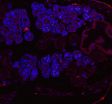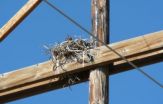(Press-News.org) Native bacteria living inside mosquitoes prevent the insects from passing Wolbachia bacteria -- which can make the mosquitoes resistant to the malaria parasite -- to their offspring, according to a team of researchers.
The team found that Asaia, a type of bacteria that occurs naturally in Anopheles mosquitoes, blocks invasion of Wolbachia into the mosquitoes' germlines -- the cells that are passed on through successive generations of an organism -- thus stopping the insects from transmitting Wolbachia to their offspring.
"Wolbachia infects up to 70 percent of all known insect species, but is notably absent from some groups, including the Anopheles mosquitoes that transmit malaria," said Jason Rasgon, associate professor of entomology, Penn State. "One of the big questions is, 'Why are some insect species infected with Wolbachia while others are not?' Our research provides a potential answer -- maybe competitive interactions with Asaia, or other bacteria present in the insects, determine whether Wolbachia can infect the germline, be transmitted and invade the population, which is a desired outcome if Wolbachia is to be a successful control agent for malaria or other vector-borne pathogens. Both Wolbachia and Asaia are independently being evaluated as potential control agents for vector-borne pathogens; our research suggests that maybe these two strategies are not compatible."
According to Rasgon, in the insects in which it naturally occurs, Wolbachia is transmitted vertically from mother to offspring, but over evolutionary time it often has been transmitted horizontally between insect groups.
"No one really knows why some species are infected and why some are not, and no one really knows what governs the successful acquisition of a horizontally acquired Wolbachia infection," he said.
To conduct their study, the researchers injected Wolbachia into female Anopheles adults and measured transmission to offspring.
"We found that under normal circumstances, Wolbachia was transmitted very poorly and that Wolbachia-injected mosquitoes died after bloodfeeding," said Rasgon. "However, when we reared mosquitoes with antibiotics prior to Wolbachia injection, Wolbachia was transmitted much more efficiently and mosquitoes survived after bloodfeeding."
The team then used a DNA sequencing technique to identify all of the bacteria --the "microbiome" -- in the antibiotic-treated and control mosquitoes. They found that Asaia was specifically reduced by the antibiotic treatment in two different Anopheles species.
The scientists then generated an antibiotic-resistant Asaia mutant and supplemented this bacterial mutant back to the antibiotic-treated mosquitoes. They found that after they recolonized the antibiotic-treated mosquitoes with Asaia, Wolbachia was no longer transmitted to offspring and mosquitoes died faster after bloodfeeding.
The results appear in today's (August 11) issue of the Proceedings of the National Academy of Sciences.
"With Asaia, we have identified the first specific barrier to Wolbachia maternal transmission," said Rasgon. "We have also shown that Wolbachia can interact with the other members of the mosquito microbiome. Finally, we have a potential hypothesis to explain the decades-old observation of the apparent lack of Wolbachia infection in Anopheles mosquitoes."
In the future, the team plans to investigate whether the phenomenon of one species of bacteria blocking maternal transmission of other species holds true across a wider range of insect species. The researchers also hope to exploit their new knowledge to more easily establish stable Wolbachia infections in Anopheles and other mosquitoes.
INFORMATION:
Other authors on the paper include Grant Hughes, research associate in entomology; Brittany Dodson, graduate student in entomology; Rebecca Johnson, graduate student in immunology and infectious diseases; Courtney Murdock, postdoctoral scholar in entomology; Hitoshi Tsujimoto, postdoctoral scholar in entomology; Yasutsugu Suzuki, postdoctoral scholar in entomology; Alyssa Patt, undergraduate researcher in immunology and toxicology; Long Cui, postdoctoral scholar in entomology; Rhiannon Barry, research specialist in entomology; and Joyce Sakamoto, research associate in entomology, all at Penn State. Also included are Carlos Nossa of Rice University and Emily Hornett of Penn State and the University of Cambridge.
The National Institutes of Health and the Pennsylvania Department of Health supported this research.
Native bacteria block Wolbachia from being passed to mosquito progeny
2014-08-11
ELSE PRESS RELEASES FROM THIS DATE:
Novel drug action against solid tumors explained
2014-08-11
(SACRAMENTO, Calif.) — Researchers at UC Davis, City of Hope, Taipai Medical University and National Health Research Institutes in Taiwan have discovered how a drug that deprives the cells of a key amino acid specifically kills cancer cells.
Their paper, published today in Proceedings of the Academy of Sciences, is the culmination of nearly a decade of research into the role of arginine – and its deprivation – in the generation of excessive autophagy, a process in which the cell dies by eating itself.
Study co-author Hsing-Jien Kung, a renowned cancer biologist and ...
Reconstructions show how some of the earliest animals lived -- and died
2014-08-11
VIDEO:
This is an animation of the growth and development of the extinct rangeomorph species Beothukis mistakenis, which lived during the Ediacaran Period from approximately 575 to 555 million years ago....
Click here for more information.
A bizarre group of uniquely shaped organisms known as rangeomorphs may have been some of the earliest animals to appear on Earth, uniquely suited to ocean conditions 575 million years ago. A new model devised by researchers at the University ...
A vaccine alternative protects mice against malaria
2014-08-11
A study led by Johns Hopkins Bloomberg School of Public Health researchers found that injecting a vaccine-like compound into mice was effective in protecting them from malaria. The findings suggest a potential new path toward the elusive goal of malaria immunization.
Mice, injected with a virus genetically altered to help the rodents create an antibody designed to fight the malaria parasite, produced high levels of the anti-malaria antibody. The approach, known as Vector immunoprophylaxis, or VIP, has shown promise in HIV studies but has never been tested with malaria, ...
Search for biomarkers aimed at improving treatment of painful bladder condition
2014-08-11
Winston-Salem, N.C. – August 11, 2014 – Taking advantage of technology that can analyze tissue samples and measure the activity of thousands of genes at once, scientists at Wake Forest Baptist Medical Center are on a mission to better understand and treat interstitial cystitis (IC), a painful and difficult-to-diagnose bladder condition.
"We are looking for molecular biomarkers for IC, which basically means we are comparing bladder biopsy tissue from patients with suspected interstitial cystitis to patients without the disease. The goal is to identify factors that will ...
Highly drug resistant, virulent strain of Pseudomonas aeruginosa arises in Ohio
2014-08-11
A team of clinician researchers has discovered a highly virulent, multidrug resistant form of the pathogen, Pseudomonas aeruginosa, in patient samples in Ohio. Their investigation suggests that the particular genetic element involved, which is still rare in the United States, has been spreading heretofore unnoticed, and that surveillance is urgently needed. The research is published ahead of print in Antimicrobial Agents and Chemotherapy.
The P. aeruginosa contained a gene for a drug resistant enzyme called a metallo beta-lactamase. Beta-lactamases enable broad-spectrum ...
Want to kill creativity of women in teams? Fire up the competition
2014-08-11
Recent research has suggested that women play better with others in small working groups, and that adding women to a group is a surefire way to boost team collaboration and creativity.
But a new study from Washington University in St. Louis finds that this is only true when women work on teams that aren't competing against each other. Force teams to go head to head and the benefits of a female approach evaporate.
"Intergroup competition is a double-edged sword that ultimately provides an advantage to groups and units composed predominantly or exclusively of men, while ...
New study: Ravens rule Idaho's artificial roosts
2014-08-11
A new study by the Wildlife Conservation Society (WCS), U.S. Geological Survey (USGS) and Idaho State University (ISU) explored how habitat alterations, including the addition of energy transmission towers, affect avian predators nesting in sagebrush landscapes.
Researchers compared nesting habitat selection between Common Ravens and three raptor species commonly found in sagebrush ecosystems: Red-tailed Hawks, Swainson's Hawks, and Ferruginous Hawks.
Using the data from their field research and reviewing historical data from other studies, the scientists developed ...
Can fiction stories make us more empathetic?
2014-08-11
Empathy is important for navigating complex social situations, and is considered a highly desirable trait. Raymond Mar, a psychologist at York University in Canada, discussed how exposure to narrative fiction may improve our ability to understand what other people are thinking or feeling in his session at the American Psychological Association's 122nd Annual Convention.
Exposure to stories
Many stories are about people--their mental states, their relationships—even stories with inanimate objects, may have human-like characteristics. Mar explains that we understand stories ...
Julio embarking on weakening trend
2014-08-11
The Central Pacific Hurricane Center has issued its 30th warning on Julio today at 1500 GMT. Julio's position at this point is 395 miles northeast of Honolulu, Hawaii moving northwest at 8 knots per hour. Julio is moving toward the northwest near 9 mph, 15 km/h. Maximum sustained winds are near 75 mph, 120 km/h, with higher gusts. Julio is expected to weaken slightly over the next 48 hours, down to tropical storm strength by tonight.
At present, hurricane force winds extend outward up to 25 miles, 35 km, from the center, and tropical storm force winds extend outward ...
Genevieve Downgraded to a tropical storm
2014-08-11
Once Super Typhoon Genevieve has now been downgraded to a tropical storm. The storm is located approximately 819 nautical miles west-northwest of Midway Island. It is currently tracking northwestward at 8 knots per hour over the past six hours. Maximum significant wave height is 32 feet. Maximum sustained winds 70 knots gusting to 85 knots, with winds of 34 knots or higher occur within 80 to 105 miles of the cente,r and winds of 64 knots or higher occur within 15 miles of the center. No landmasses are currently threatened by this storm.
Genevieve is moving northwest ...





